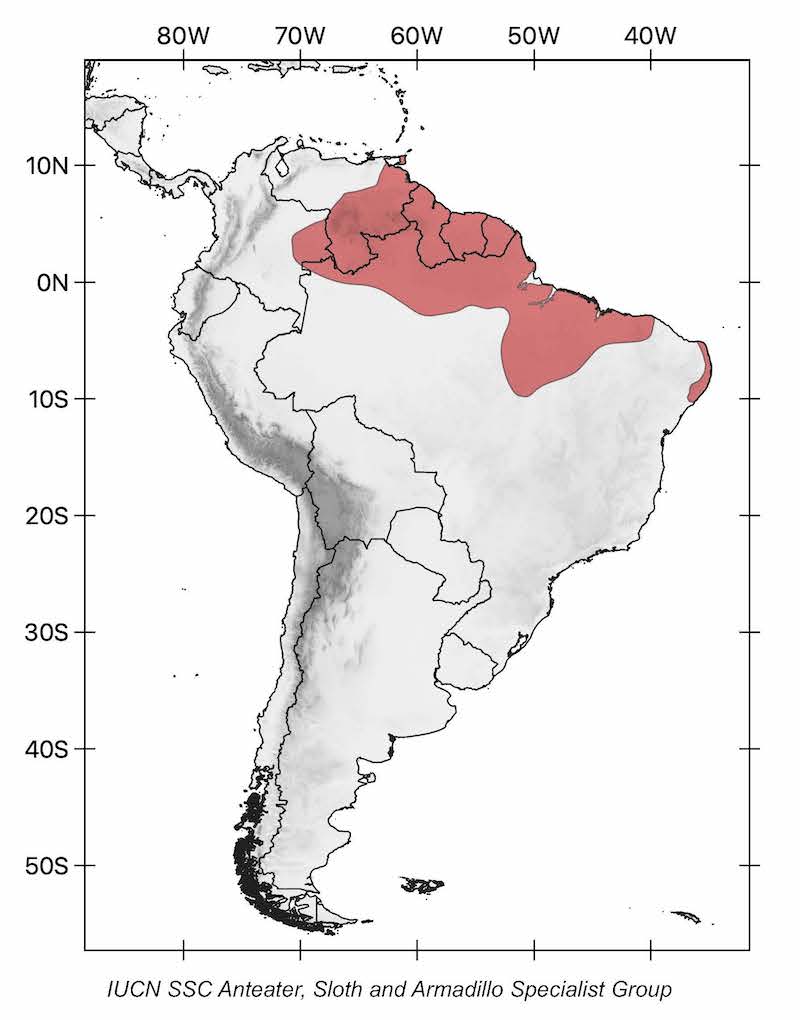Common silky anteater
(Cyclopes didactylus)
other common names
Common pygmy anteater
Taxonomy
Order: Pilosa
Family: Cyclopedidae


description
Until recently, it was thought that there was only a single species of silky anteaters. However, a 10-year long investigation by Miranda et al. (2018) provided evidence that there are actually seven species of Cyclopes.
This species has a head-body length of 20 cm and a tail of 16.5–29.5 cm length. It weighs around 300 grams. The general color is brownish yellow, with a grey rump, legs, and tail. There is an irregular but distinctive dorsal stripe, with evident dorsal and ventral black stripes.

range
The common silky anteater is known from eastern Colombia, eastern and southern Venezuela, Trinidad Island, the Guianas, and northern and northeastern Brazil, with the southern limit being the São Francisco River.
Cyclopes didactylus has a genetically separated subpopulation (i.e., a disjunct distribution) in Brazil. One is limited to the northeast of the Brazilian Amazon (state of Pará), towards the Brazilian states of Maranhão and Piauí, and the other is a disjunct subpopulation in the northeastern Atlantic forest, including the states of Rio Grande do Norte, Paraíba, Pernambuco, and Alagoas. According to the silky anteater specialist Flávia Miranda, these subpopulations were separated more than 2 million years ago.

HaBITAT and ECOLOGy
Cyclopes didactylus can be found in evergreen tropical, mangrove, and secondary forests. The subpopulation in north-eastern Brazil is restricted to tropical moist lowland forests in the Atlantic Forest biome. It has been observed in red and white mangrove habitats.
Not much is known about the ecology of this arboreal anteater. It is quite abundant, but difficult to observe in the Brazilian Amazon. On Trinidad Island, population density has been estimated at 4.6–5.5 individuals per km².

diet
This is an opportunistic forager that almost entirely feeds on ants, but can also ingest beetles. To date, no termites have been identified in any study on its diet.

reproduction
Female common silky anteaters usually give birth to a single young per year, usually in September-November, after a gestation of 120–150 days.

threats
The species is affected by habitat loss, especially in the Brazilian Atlantic forest where large areas of native forests have been replaced by sugarcane plantations. In Suriname, the indigenous people from the hinterland consider that the species brings bad luck, because of which they always kill it when they find one.

Population trend
Stable.

conservation status
Cyclopes didactylus is listed as Least Concern in view of its wide distribution, presumed large population, its occurrence in a number of protected areas, its tolerance of a degree of habitat modification, and because it is unlikely to be declining fast enough to qualify for listing in a more threatened category.